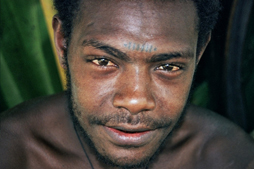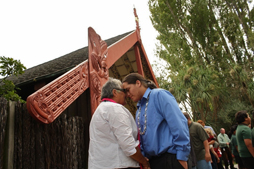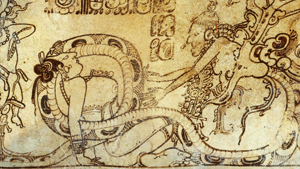ABOUT TAC FESTIVAL ON THE ROAD
Welcome to TAC Festival On the Road! This film series features nine of the top films from the 2014 edition of The Archaeology Channel International Film and Video Festival, one of the world’s leading juried competitions for films relating to archaeology and cultural heritage, and the only one located in the Western Hemisphere. TAC Festival attracts worldwide attention among film makers and distributors.
TAC Festival On the Road is a turnkey film festival designed to be delivered as a package to organizations for use at their local venues. Its content is updated annually following each edition of TAC Festival. TAC Festival 2014, which took place May 9-13 in Eugene, Oregon, received 113 film entries from 24 countries and selected the top 18 films for screening and for the competition.
The Festival mission is to exhibit for our audience the wonderful diversity of human cultures past and present in the exploration of our place in history and our world and to promote the genre and the makers of film productions about archaeology and indigenous peoples. Growing in popularity and influence since its inception in 2003, TAC Festival is a showcase for a wide variety of film categories and styles. This is a way to bring people the human story and to create for them a positive and memorable experience focused on cultural legacy.
THE PROGRAMS
Each of the following two-hour programs is a package that you can select for your event. Each film description concludes with a summary of awards given for that film from TAC Festival 2014. Each title is a hot link to a page with further information that includes a clip you can watch.
Program A:
Davis Bottom: Rare History, Valuable Lives (USA) 56 min.
Davis Bottom: Rare History, Valuable Lives reveals the fascinating history of a diverse, working-class neighborhood. Davis Bottom, established in 1865, is one of about a dozen ethnic enclaves settled primarily by African-American families who migrated to Lexington from the 1860s to the 1890s in search of jobs, security and opportunity. Davis Bottom, located in a narrow, swampy valley about a mile south of downtown Lexington, is named after Willard Davis, a land speculator and civil rights advocate who became the Attorney General for the State of Kansas. Over the past 150 years, residents have made this small, tight-knit neighborhood a hidden model for racial diversity and community cohesion. Today this enclave is facing a challenge with the construction of the Newtown Pike Extension, a roadway that has displaced many residents. This part of history is now being documented as part of The Davis Bottom History Preservation Project. (Honorable Mention by Jury for Music; Special Mention by Jury for Best Use of Social History)
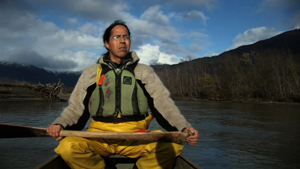
Smokin’ Fish (USA) 56 min.
Cory Mann is a quirky Tlingit businessman hustling to make a dollar in Juneau, Alaska. Each year, he puts his business on hold and spends a summer smoking salmon at his family’s traditional fish camp. Here, the film weaves together Mann’s unique personal history, the largely untold history of his people and his effort to maintain a connection to Native American traditions while balancing the demands of modern-day life. A playful exploration of Native American identity, Smokin’ Fish chronicles one man’s attempts to navigate the collision between the modern world and an ancient culture. (Honorable Mention by Jury in Best Film competition; Honorable Mention by Jury for Narration; Honorable Mention by Jury for Public Education Value; Best Music by Jury; Honorable Mention by Jury for Inspiration; Honorable Mention in Audience Favorite competition)
Program B:
Discovering Dave: Spirit Captured in Clay (USA) 49 min.
This documentary revolves around the story of the Edgefield, South Carolina, slave potter named David Drake. David, who used his skills as a craftsman, created beautiful pottery, which included jars and pitchers, during the turbulent 1800s. While producing thousands of pots in his lifetime, David also wrote poetry. He was one of the first African-American slaves to sign many of his works. His story is a testament to his willingness to be heard and to leave his mark for ages to come, even at risk of severe punishment. (Honorable Mention by Jury in Best Film competition; Honorable Mention by Jury for Narration; Honorable Mention by Jury for Public Education Value; Honorable Mention by Jury for Script; Most Inspirational by Jury)
Stori Tumbuna: Ancestors’ Tales (New Zealand) 89 min.
Stori Tumbuna: Ancestors’ Tales was conceived as an opportunity for the Lak of New Ireland, a large island in Papua New Guinea, to tell their stories in their way. In the words of filmmaker Paul Wolffram, “It’s a story of how I came to know the people of the region and how my story became forever woven into their own.... I was to become enmeshed in events that resulted in bloodshed and death. What’s more, I was held responsible.” The film was shot over several years and takes its structure from the traditional mythologies of the region. Unlike most films based on the lives of traditional communities that are told from the point of view of an outsider, this film adopts indigenous narrative structures and presents a collaborative account that privileges local points of view and the Lak ethos.
Program C:
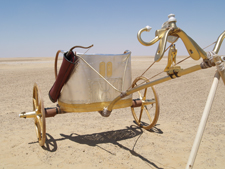
Building Pharoah’s Chariot (USA) 52 min.
3,600 year-old reliefs in Egyptian tombs and temples depict pharaohs and warriors proudly riding into battle on horse-drawn chariots. Some historians claim that the chariot launched a technological and strategic revolution. But was the Egyptian chariot really a revolutionary design? How decisive a role did it play in the bloody battles of the ancient world? In Building Pharaoh’s Chariot, a team of archaeologists, engineers, woodworkers, and horse trainers join forces to build and test two highly accurate replicas of Egyptian royal chariots. They discovered the use of advanced features, including spoked wheels, springs, shock absorbers, anti-roll bars, and a convex-shaped rear mirror, leading to the comparison of design to the engineering standards of the 1930s era Buicks! By driving our pair of replicas to their limits in the desert outside Cairo, NOVA’s experts test the claim that the chariot marks a crucial turning point in ancient military history. (Honorable Mention by Jury for Animation & Effects; Honorable Mention by Jury for Public Education Value; Honorable Mention by Jury for Script; Honorable Mention by Jury for Cinematography; Honorable Mention in Audience Favorite competition)
Dancing Salmon Home (USA) 66 min.
Dancing Salmon Home is an emotional journey of loss and reunification, across generations and oceans, as members of the Winnemem Wintu tribe of northern California travel to New Zealand to meet their long-lost Chinook salmon family relatives who were missing from their McCloud River homeland for 65 years. Along the way, the 28 tribal members hold four days of ceremony beside New Zealand’s Rakaia River, forging enduring bonds with the Maori people of the region, sharing a message of respect for the natural world and launching plans to bring their salmon home. (Honorable Mention in Audience Favorite competition)
Program D:
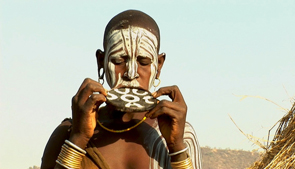
Framing the Other (Netherlands) 25 min.
The Mursi tribe resides in the basin of the Omo River, in the east African state of Ethiopia. Mursi women are known for placing large plates in their lower lips and wearing enormous, richly decorated earrings, which have become a subject of tourist attraction in recent years. Each year, hundreds of Western tourists come to see the unusually adorned natives, so that posing for camera-toting visitors has become the main source of income for the Mursi. To make more money, they embellish their “costumes” and finery to appear more exotic to the outsiders. However, by exaggerating their habits and lifestyle in such a manner, they are beginning to disintegrate their traditional culture. This film portrays the complex relationship between tourism and indigenous communities by revealing the intimate and intriguing thoughts of a Mursi woman from southern Ethiopia and a Dutch tourist as they prepare to meet each other. This humorous, yet simultaneously chilling, film shows the destructive impact tourism has on traditional communities. (Honorable Mention by Jury in Best Film competition; Honorable Mention by Jury for Narration; Best Public Education Value by Jury; Honorable Mention by Jury for Script; Honorable Mention by Jury for Music; Honorable Mention by Jury for Inspiration; Audience Favorite)
Dance of the Maize God (USA) 96 min.
Over the past 50 years, thousands of exquisitely painted Maya vases, almost all looted from tombs, have flooded into public and private collections. These amazing works of art have opened an extraordinary window into the Maya past. But the race to unearth these treasures has destroyed temples and palaces, culminating in the takeover of entire ancient cities by looter armies. Dance of the Maize God enters the world of the vases to explore the royal life and rich mythology of the Maya, as well as the tangled issues involved in the collection and study of Maya art. The story is told by villagers, looters, archaeologists, scholars, dealers, and curators. For each, these vases have a radically different value and meaning. (Best Film by Jury; Honorable Mention by Jury for Narration; Best Animation & Effects by Jury; Honorable Mention by Jury for Public Education Value; Best Script by Jury; Honorable Mention by Jury for Cinematography; Honorable Mention by Jury for Music; Honorable Mention by Jury for Inspiration; Honorable Mention in Audience Favorite competition)
THE PARTICULARS:
TAC Festival On the Road comprises four two-hour programs that you can show separately or in any combination. You can show the programs in any order on your own schedule. Festival Director Rick Pettigrew is available by arrangement to introduce screenings.
Our price structure is as follows:
$400 per program (approximately two hours long, with two films)
$1600 for the entire On the Road package of eight films (four programs)
We share these proceeds with the film makers as part of our mission to support the genre.
Our services include:
- DVD on loan to you for each film
- Background and promotional information for TAC Festival On the Road
- Background and promotional information for each title
- Promotional still images for each title
- Preview footage for each title on DVD
- A guide for conducting the event
Supporting resources include preview clips for all the films available for free viewing on TAC through our Web site links (see the title links above).
For more information, please contact us at This email address is being protected from spambots. You need JavaScript enabled to view it.

